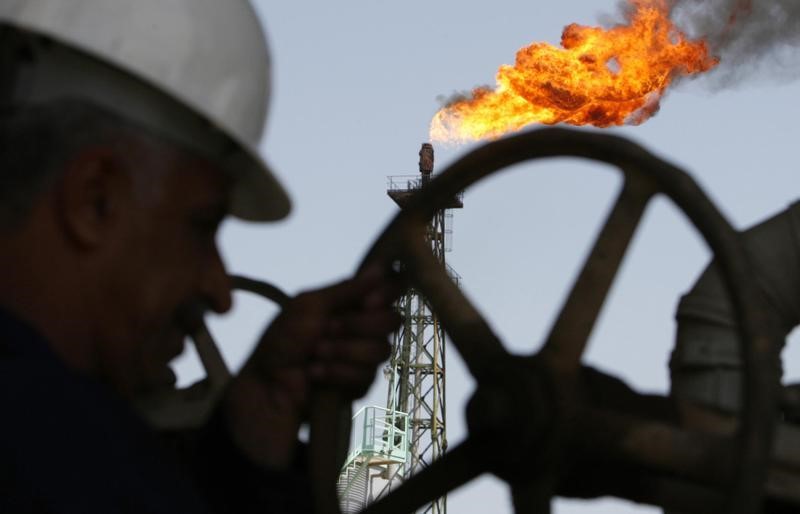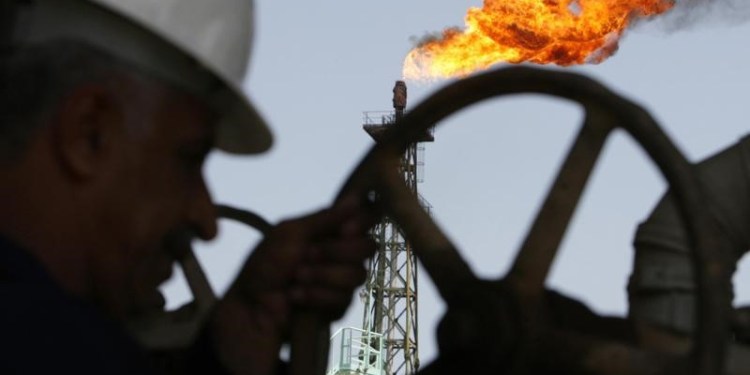
© Reuters.
LCO
+0.81%
Add to/Remove from Watchlist
Add to Watchlist
Add Position
Position added successfully to:
Please name your holdings portfolio
Type:
BUY
SELL
Date:
Amount:
Price
Point Value:
Leverage:
1:1
1:10
1:25
1:50
1:100
1:200
1:400
1:500
1:1000
Commission:
Create New Watchlist
Create
Create a new holdings portfolio
Add
Create
+ Add another position
Close
CL
+1.18%
Add to/Remove from Watchlist
Add to Watchlist
Add Position
Position added successfully to:
Please name your holdings portfolio
Type:
BUY
SELL
Date:
Amount:
Price
Point Value:
Leverage:
1:1
1:10
1:25
1:50
1:100
1:200
1:400
1:500
1:1000
Commission:
Create New Watchlist
Create
Create a new holdings portfolio
Add
Create
+ Add another position
Close
Investing.com — Oil prices rose Monday, continuing to rally on the prospect of a tighter market, at the start of a week that includes several key central bank meetings.
By 09:30 ET (13.30 GMT), the U.S. crude futures traded 1.1% higher at $91.03 a barrel, while the Brent contract climbed 0.9% to $94.75.
Supply tightness leads to sharp gains
Both contracts were still sitting close to their highest levels since November 2022, having gained over 30% over the past three months following supply cuts from Saudi Arabia and Russia.
The two countries recently said that their 1.3 million barrels per day cuts will extend until the end of the year, potentially pushing the market into a 2 million barrels per day deficit in the fourth quarter.
“Prices confidently have broken out of the $70-89 range, where they had been stuck since last year. Now, the path upward is open for them, and the former resistance zone should provide strong support,” said Kirill Bellaev, an analyst at FBS brokerage.
“Experts predict that unless there is a sharp economic downturn, these supply cuts will lead to a profound deficit in global oil balances and should push oil prices significantly above $90 per barrel.”
Fed meeting is the week’s highlight
There are a series of central bank policy-setting meetings scheduled for this week, headlined by a two-day Federal Reserve get together, finishing on Wednesday.
The U.S. central bank is widely expected to keep interest rates on hold, but is also likely to maintain its hawkish outlook, especially after a recent upswing in inflation.
U.S. interest rates are expected to remain higher for longer, pointing to more pressure on the U.S. economy, which traders fear could stymie its appetite for oil. U.S. fuel demand is also expected to cool in the coming months, especially with the end of the summer season.
The Bank of England is expected to hike interest rates again on Thursday, while the Bank of Japan could move away from the massive monetary stimulus of the past decade.
The European Central Bank raised its key deposit rate to a record high of 4% last week, but also signalled that its 10th straight hike was likely to be its last as it downgraded its growth forecasts.
China remains key demand growth risk
The crude market had also received a boost late last week when the People’s Bank of China cut the reserve requirement ratio for local banks by 25 basis points – its second such cut this year.
A sluggish economic recovery in China, the largest crude importer in the world, is generally regarded as a key risk to global demand growth, though its oil imports have remained generally robust.
The PBOC also meets this week, but is expected to keep its loan prime rates on hold as it struggles to strike a balance between supporting an economic recovery and preventing further weakness in the yuan.
(Ambar Warrick contributed to this item.)
Source: Investing.com



























